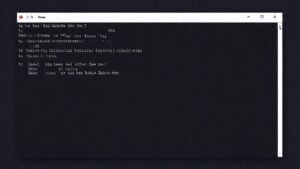Trump Chicago immigration crackdown: Stakes, signals, and civic consequences
- THE MAG POST

- Sep 8
- 6 min read

What Drives the Trump Chicago immigration crackdown Beyond Headlines?
Policy shifts rarely travel alone; they ride the momentum of political narratives, legal debates, and local realities. The Trump Chicago immigration crackdown, as framed in recent statements, invites readers to assess governance, enforcement, and community resilience in one of America\'s most scrutinized urban laboratories.
Context and Legal Framing
The legal architecture of federal immigration enforcement sits at the intersection of executive powers and constitutional limits. In this tense chapter, officials emphasize operational readiness while courts and watchdogs remind the public that authority is layered across agencies and jurisdictions. The rhetoric around the crackdown reflects a broader political calculus about border control, public safety, and administrative discretion, even as city leaders caution against rapid and uncoordinated measures that could strain local resources and civil rights norms.
Observers note that timelines for escalated ICE activity remain uncertain, with public comments scarce and predictable politics shaping public perception more than actual deployments. Within such ambiguity, the relationship between federal aims and local realities becomes a live test case for how immigration policy translates into on the ground practice in large metropolitan areas.
Public Response and Political Dynamics
Chicago officials and immigrant advocates have traced a familiar pattern: public statements raise stakes, while day to day operations unfold with careful attention to legality and community impact. The unfolding discourse blends concerns about safety, constitutional protections, and the lived experiences of families who rely on local services. This dynamic underscores how national policy debates filter into neighborhood-level conversations and votes.
In this milieu, the Trump Chicago immigration crackdown serves as a focal point for questions about credible enforcement versus political signaling. While some observers view the rhetoric as a legitimate attempt to enforce immigration law, others warn that loud assertions risk normalizing heavy-handed tactics that could erode trust between communities and law enforcement. The balance between deterrence and civil liberties remains a central tension in the narrative.
Signals, Silence, and the Momentum of Enforcement
Rhetorical signals from Washington influence how local actors prepare for possible enforcement actions, even when official deployments are not immediately visible. The absence of concrete deployments often speaks as loudly as their presence, shaping budgeting decisions, community outreach, and legal preparedness across city services and nonprofit partners. The topic, therefore, becomes less about a single operation and more about a broader trajectory in which federal and local authorities negotiate legitimacy and accountability.
The Logistics of Enforcement Timelines
Without a fixed timetable, agencies must navigate complex coordination challenges, data-sharing protocols, and civil rights safeguards. City leaders weigh how to maintain essential public services while ensuring that vulnerable populations are informed and protected. The uncertainty itself becomes a policy constraint, prompting dialogues about transparency, oversight, and predictable practices that reduce fear and confusion in high-density communities.
Operational readiness often means rehearsing scenarios, updating compliance checklists, and clarifying jurisdictional boundaries. Even as officials insist that enforcement is a tool of national policy, they acknowledge that missteps could provoke unnecessary disruption to everyday life, school attendance, healthcare access, and local commerce. The result is a cautious, lingering tension between aspiration and practicality.
Community Voices and Civil Liberties
Advocates emphasize the central stakes for families who fear displacement and for communities that rely on trusted local institutions. They remind policymakers that civil liberties are the bedrock of a functioning democracy, and that enforcement efforts must be measured against due process standards and non-discrimination principles. Community-led monitoring and legal assistance programs have intensified as a response to perceived gaps in communication and fairness.
From neighborhood associations to faith-based groups, voices across Chicago call for governance that respects human dignity while upholding the rule of law. The discourse highlights the need for clear channels of information, fair treatment in enforcement encounters, and robust avenues for recourse when rights are perceived to be at risk. In this environment, public accountability becomes a continuous project rather than a one-time event.
Public Discourse in Chicago: Law, Order, and Community Impact
Urban politics often crystallizes around how policy debates are framed and who shapes the narrative. In Chicago, conversations about safety, immigration, and constitutional limits intersect with local experiences of policing, schools, and public services. The resulting dialogue can either foster constructive reforms or polarize communities further, depending on how honestly the facts are presented and how responsibly leaders listen to diverse constituencies.
Media Framing and Rhetorical Boundaries
Media coverage influences public perception by emphasizing dramatic visuals and sharp headlines while sometimes underappreciating procedural nuance. When complex policy questions are reduced to binary choices, audiences may miss the subtleties of how enforcement, immigration status, and community protection interact. Thoughtful reporting, in contrast, can illuminate pathways that balance safety with rights and due process.
As local voices participate in the conversation, journalists and scholars push for rigorous sourcing, transparent timelines, and clear explanations of how federal actions translate into local practices. The aim is not to polish a narrative but to sharpen understanding so communities can engage in informed, constructive ways.
Practical Implications for Immigrant Communities
Real-world consequences extend beyond policy announcements. Families navigate school boundaries, healthcare access, and employment uncertainties even in the absence of visible enforcement activity. Community organizations respond by expanding legal clinics, outreach programs, and language-access services, ensuring that residents know their rights and available protections.
Educators and local leaders warn that fear can erode civic participation, while proactive engagement helps communities build resilience. By linking safety with rights, Chicago can model how cities manage national policy frictions without compromising on inclusive governance.
What Comes Next: Policy, Politics, and Practical Realities
The road ahead hinges on how federal policy preferences, court decisions, and local administration choices converge in a polarized political environment. For Chicago and similar cities, the challenge is to design enforcement that is lawful, transparent, and proportionate to risk, while preserving community trust and access to essential services. The interplay of politics, law, and everyday life will continue to shape the contours of immigration policy in the years ahead.
Policy Pathways and Federal-Local Tensions
Policy options range from targeted enforcement actions to broader administrative reforms, each with distinct implications for funding, oversight, and interagency coordination. Cities may seek formal guidance, clearer boundaries, and joint framework agreements that reduce ambiguity and potential constitutional concerns. The outcome will influence how future administrations communicate policy aims and how local leaders interpret national directives.
As debates evolve, lawmakers on both sides of the aisle highlight the need for pragmatic solutions that address labor markets, security concerns, and humanitarian considerations. The practical reality is that immigration policy will continue to require negotiation, compromise, and ongoing evaluation of what works best for communities and their economies.
Strategic Communication and Governance
Clear, responsible communication becomes a policy tool in its own right. Cities that communicate consistently about rights, resources, and processes can reduce fear and confusion while enabling lawful action. Conversely, opaque messaging can undermine legitimacy and fuel misinformation. The governance challenge is to align public messaging with actual practices, ensuring accountability at every step.
Ultimately, the health of civic discourse depends on inclusive engagement, independent oversight, and robust civil society participation. When residents see that enforcement is measured, rights-respecting, and well explained, trust can be rebuilt even amid difficult policy debates.
Key Takeaways
Policy Implications for City Governance
Effective governance requires balancing safety and rights, with transparent decision-making about enforcement timelines and community protections. Cities should pursue clear guidelines, independent oversight, and open channels for public feedback to minimize disruption and injustice.
Federal-local collaboration matters, but so does local capacity. Investing in legal aid, language services, and community policing that emphasizes trust can help neighborhoods weather policy shifts without eroding civil liberties.
Civic Engagement and Media Literacy
Public discourse thrives when residents can differentiate between rhetoric and action. Media literacy campaigns, civic education, and accessible briefings empower communities to participate constructively rather than reactively to political signals.
Engaged citizenship, supported by reliable information flows, strengthens democratic accountability. When people understand the structure of immigration policy and the limits of executive power, debates become more about solutions than slogans.
Aspect | Summary |
Key theme | Analysis of the Trump Chicago immigration crackdown and its implications for governance and civil rights |
Context | Federal actions, local responses, and the constitutional framework guiding immigration enforcement |
Public response | Reactions from Chicago officials, immigrant advocates, and community groups |
Outlook | Policy pathways, timelines, and the balance between safety and civil liberties |






















































Comments